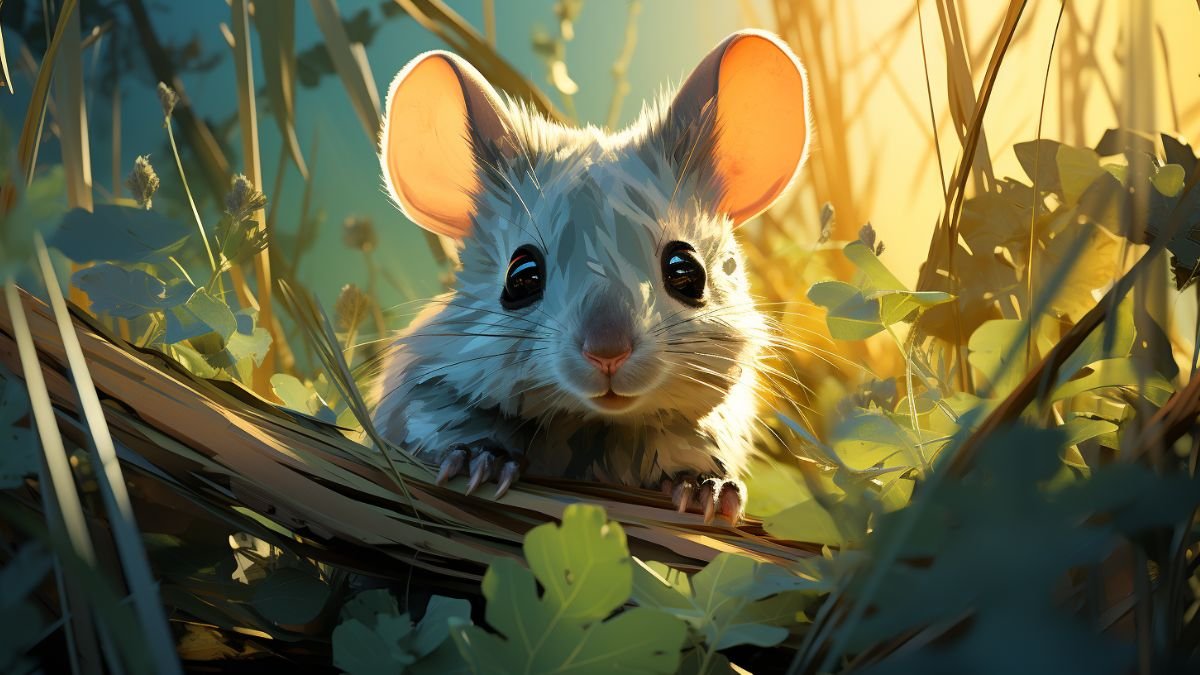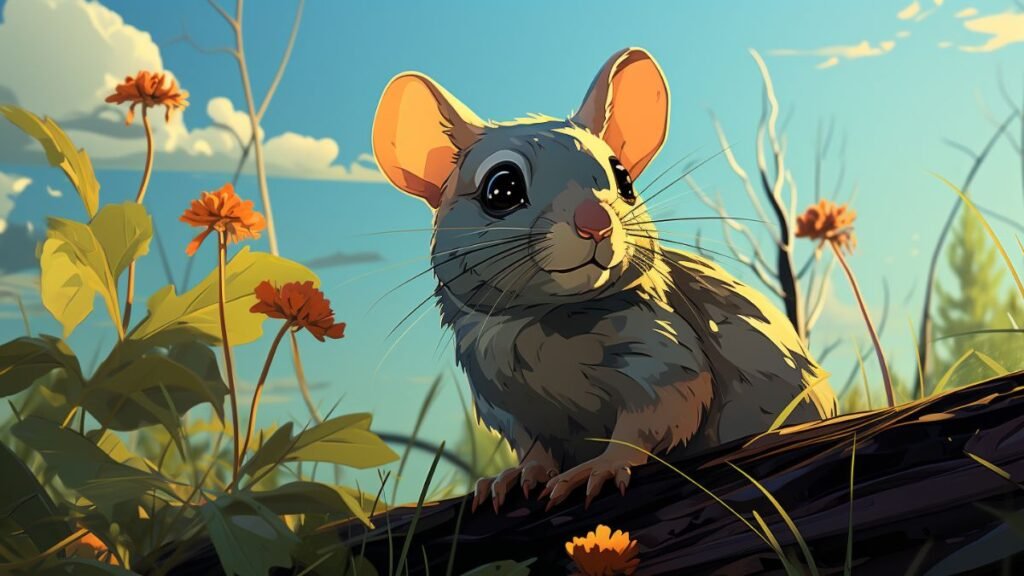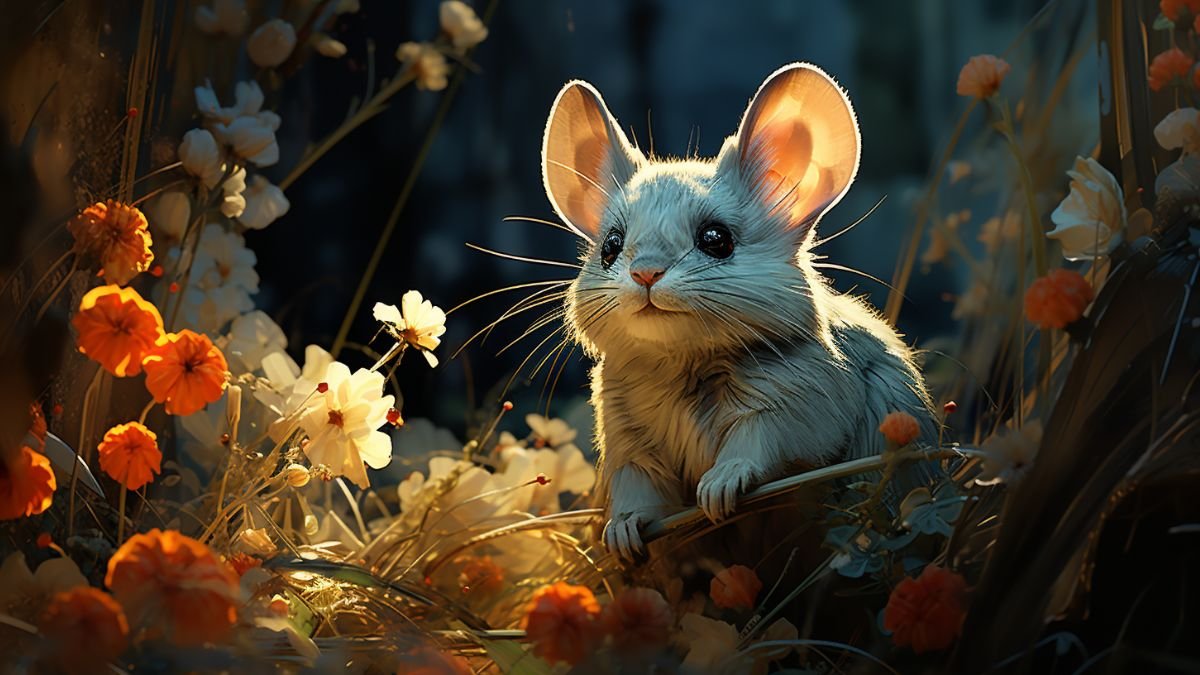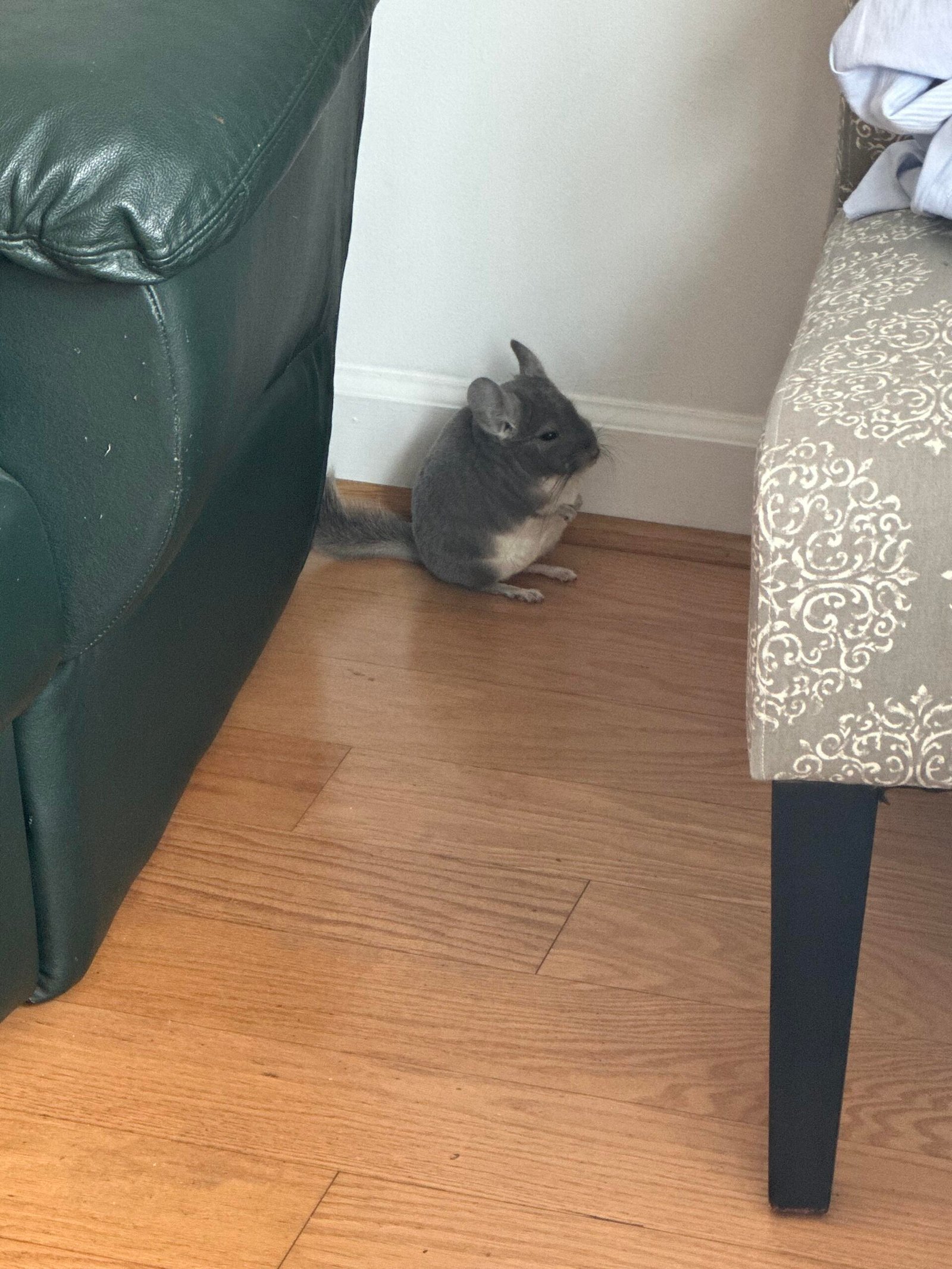
Introduction: Imagine a fluffy little chinchilla hopping around, its soft fur captivating your heart. But wait, can these adorable creatures get fleas? This fascinating article will explore whether chinchillas can be infested with fleas. So, let’s dive right in and uncover the truth!
Chinchillas and Fleas: You’ll be relieved to know that chinchillas are not prone to flea infestations like other furry critters. These delightful rodents have dense fur that is incredibly soft and acts as a natural barrier against fleas. Their fur is so thick that it makes it difficult for fleas to infiltrate their cozy haven.
Why Don’t Chinchillas Get Fleas? The secret lies in their grooming habits. Chinchillas are meticulous self-cleaners, spending hours each day meticulously grooming themselves. They use their tiny paws and nimble tongues to keep their fur clean and parasite-free. This fastidious grooming routine helps them remove any potential fleas before they become a problem.
Additionally, chinchillas have dry skin, which is a deterrent for fleas. These tiny pests thrive in moist environments, making the chinchilla’s dry and inhospitable skin an unattractive habitat for them.
Preventing Fleas in Chinchillas: While chinchillas are naturally protected against fleas, it’s still essential to maintain good hygiene practices to ensure their well-being. Regularly clean their living environment, including their cages, bedding, and toys. This will help prevent external parasites from finding a cozy hiding spot near your beloved pet.
If you have other pets in the household that may bring in fleas, take precautions to prevent cross-contamination. Keep your chinchilla’s living space separate from areas where fleas may be present, and regularly check all pets for signs of infestations.
Conclusion: In the world of chinchillas, fleas are a rarity. With their dense fur, meticulous grooming habits, and inhospitable skin conditions, these adorable rodents are not prone to flea infestations. However, maintaining good hygiene and eyeing for any signs of external parasites is always a responsible approach when caring for any pet. So, rest assured that your beloved chinchilla can continue hopping around flea-free, bringing joy and cuddles into your life!
Understanding the Risk: Can Chinchillas Get Fleas?

Chinchillas are delightful little creatures known for their soft fur and playful nature. But just like any other pet, they can be susceptible to specific health issues. One common concern among chinchilla owners is whether these adorable rodents can get fleas. Let’s delve into this topic and understand the risk associated with it.
So, can chinchillas get fleas? The answer is a resounding no! Unlike dogs or cats, chinchillas have unique fur that doesn’t attract fleas. Their dense fur has a beautiful texture, making it difficult for fleas to latch onto them. Furthermore, chinchillas practice meticulous grooming habits, regularly cleaning themselves and keeping their fur in tip-top condition. This self-grooming behavior helps to prevent any unwanted pests from hitching a ride.
It’s important to note that while chinchillas are generally flea-resistant, they can still encounter other parasites, such as mites or ticks. These tiny critters may cause discomfort and skin issues if not promptly addressed. Regularly checking your chinchilla for any signs of skin irritation, excessive scratching, or hair loss is essential to ensure their well-being.
Maintaining a clean and hygienic living environment is crucial to keep your chinchilla parasite-free. Regularly clean their cage, bedding, and accessories to minimize the risk of infestation. Additionally, provide your furry friend with a proper diet and ensure they receive adequate exercise and mental stimulation. A healthy chinchilla with a robust immune system is less likely to face significant health concerns.
chinchillas are unlikely to get fleas due to their unique fur and grooming habits. However, they may still encounter other parasites, so vigilance is key. By providing a clean and stimulating environment and regular check-ups, you can help ensure your chinchilla enjoys a happy, healthy life free from pesky pests.
The Life Cycle of Fleas and Its Impact on Chinchillas
The life cycle of fleas can significantly impact chinchillas, those adorable little creatures we love to keep as pets. Understanding this life cycle is crucial for chinchilla owners to prevent flea infestations and ensure the well-being of their furry friends.
Fleas go through four stages in their life cycle: egg, larva, pupa, and adult. It all starts when an adult female flea finds its way onto a chinchilla. Female fleas lay eggs, which are tiny and barely visible to the naked eye. These eggs usually fall off the chinchilla and end up in the environment where the pet lives.
Once the eggs hatch, they transform into larvae. Flea larvae primarily feed on organic debris such as flea feces, dead skin cells, and other matter found in the environment. They avoid direct light and thrive in dark, humid areas like carpets, bedding, and cracks in the floor. The larvae then spin cocoons and enter the pupal stage, undergoing metamorphosis.
During the pupal stage, the larvae develop into adult fleas. Pupae are resilient and can remain dormant for weeks or months, waiting for the right conditions to emerge. Factors like temperature, humidity, and vibrations can trigger their emergence from the cocoon.
Once they emerge, adult fleas immediately seek a host, such as our dear chinchillas. They use their powerful hind legs to jump onto their unsuspecting victims. Once attached to the chinchilla, they begin feeding on blood and reproducing, repeating the cycle.
Now, you might be wondering about the impact of fleas on chinchillas. Well, fleas can cause a range of health issues. Chinchillas suffering from flea infestations may experience intense itching, skin allergies, hair loss, and even anemia due to blood loss. Fleas can also transmit diseases and parasites to chinchillas, compromising their health.
To protect your chinchilla from fleas, it’s crucial to maintain good hygiene and cleanliness in their living environment. Regularly clean and vacuum their bedding and surroundings, dispose of debris promptly, and use flea-preventive products designed explicitly for chinchillas. Consult a veterinarian for your furry companion’s most appropriate and safe flea control options.
Understanding the life cycle of fleas empowers chinchilla owners to take proactive measures against these pesky parasites. By keeping their environment flea-free, we can ensure our chinchillas live happy, healthy lives free from the discomfort and risks of flea infestations.
Preventing Flea Infestations in Chinchillas: Best Practices

Are you tired of dealing with flea infestations in your chinchilla? These tiny pests can make life miserable for your furry friend, causing discomfort and potential health issues. But fear not! In this article, we will explore the best practices for preventing flea infestations in chinchillas so you can keep your pet happy and healthy.
First and foremost, it’s essential to maintain proper hygiene for your chinchilla. Regularly cleaning their living area is essential in preventing fleas from taking hold. Remove any bedding or materials that could harbor fleas, and clean the cage thoroughly using a pet-safe disinfectant. Vacuuming the surrounding area can also help eliminate flea eggs and larvae hiding in carpets or furniture.
Another crucial step in flea prevention is grooming your chinchilla regularly. Brushing their fur not only helps to keep it clean and healthy but also allows you to detect any signs of fleas or other parasites early on. Use a fine-toothed comb to check for fleas, flea dirt (tiny black specks resembling pepper), or unusual skin irritations. If you find evidence of fleas, consult your veterinarian for appropriate treatment options.
Maintaining a clean and pest-free environment extends beyond the cage. Treat your home and chinchilla’s surroundings with flea control products for small animals. Always follow the instructions and use products that are safe for chinchillas. Remember, prevention is key, so even if you don’t see any fleas, it’s wise to take proactive measures to keep them at bay.
When preventing flea infestations, don’t forget about your chinchilla’s bedding. Opt for bedding materials less likely to attract fleas, such as paper-based or kiln-dried pine bedding. Avoid using straw or hay, as these can provide a cozy environment for fleas to thrive.
Regular veterinary check-ups are also essential to ensure your chinchilla’s overall health and well-being. Your vet can advise on flea prevention methods specific to your pet’s needs.
Following these best practices for preventing flea infestations in chinchillas, you’re taking proactive steps to protect your furry friend from these pesky parasites. Remember, a clean and hygienic environment, regular grooming, and appropriate flea control measures will go a long way in keeping your chinchilla happy and itch-free.
Identifying Flea Infestations in Chinchillas: Signs and Symptoms
Are you a chinchilla owner who suspects your beloved furry friend might have a flea infestation? Identifying the signs and symptoms of fleas in chinchillas is essential to ensure their well-being. This article will explore the telltale indications that your chinchilla may be dealing with these bothersome parasites.
First and foremost, keep an eye out for excessive scratching or grooming behavior in your chinchilla. Flea bites can cause intense itching, prompting your pet to scratch themselves incessantly. If you notice your chinchilla constantly nibbling at their fur or scratching vigorously, it could be a sign of fleas.
Another common sign is the presence of tiny black specks, known as flea dirt, on your chinchilla’s fur. Flea dirt is flea feces and looks similar to pepper flakes. To determine if it’s flea dirt, rub a damp white cloth over the specks. If it turns reddish-brown, you’ve got yourself some unwelcome flea guests.
Hair loss can also be an indicator of a flea infestation. Fleas are notorious for causing skin irritations, which can lead to patches of fur falling out. Look for any bald spots or thinning areas on your chinchilla’s coat. Additionally, pay attention to any redness, inflammation, or sores on their skin—a clear indication of flea bites.
If you suspect your chinchilla has fleas, part their fur gently to inspect their skin more closely. Fleas are small, fast-moving insects that can sometimes be visible to the naked eye. Look out for tiny brown insects scurrying through your chinchilla’s fur, particularly around their neck, back, and tail area.
In severe cases, chinchillas with flea infestations may exhibit behavioral changes such as restlessness, irritability, or reduced appetite. If your chinchilla shows any of these symptoms along with the aforementioned signs, it’s crucial to seek veterinary assistance promptly.
Recognizing the signs and symptoms of flea infestations in chinchillas is essential for their health and well-being. Watch out for excessive scratching, flea dirt, hair loss, visible fleas, and behavioral changes. Remember, early detection and appropriate treatment are vital to ensuring your chinchilla’s happy and healthy life.







